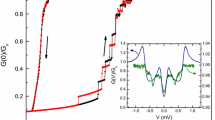Measurements of the imaginary part of the pair-field susceptibility χ″ have been carried out on dirty-limit superconducting Al films doped with Er impurities at temperatures within 20% of the critical temperature T c. These studies are the first measurements of χ″ (Ω, k) as a function of the pair-breaking parameter ϱ. Samples exhibiting values of ϱ up to 0.1 were studied. At temperatures above T c the diffusive time-dependent Ginzburg-Landau equation for order-parameter fluctuations was found to be valid in the presence of pair-breaking, with the Ginzburg-Landau time an increasing function of the pair-breaking, in quantitative agreement with theory. The characteristic frequencies of the transverse and longitudinal modes of the order parameter disequilibrium were determined from the measurements of χ″ (Ω, k) below T c by fitting to a functional form which exhibits the essential features of the most detailed theories, in particular those of Orbach and Entin-Wohlman, Dinter, and Schön and Ambegaokar, The propagating charge-imbalance wave was found to be overdamped for large values of ϱ, consistent with the theory of the transverse mode in the presence of finite pair-breaking. The peak in the excess current found near the gap voltage appears to be due to a resonance in the longitudinal mode pair-field susceptibility and not the result of single-particle tunneling as previously suggested by šimanek and Hayward. The width of this resonance as derived by Schön and Ambegaokar for the gap regime is equal to the reciprocal of the spin-flip scattering time. The other characteristic feature of the pair-field susceptibility is the peak associated with the longitudinal mode, which occurs at a frequency which is a measure of the relaxation of the amplitude of the order parameter. Dinter's theory, in particular, describes the dependence of the width of this peak on the pair-breaking parameter ϱ.
Similar content being viewed by others
References
R. A. Ferrell, J. Low Temp. Phys. 1, 423 (1969).
D. J. Scalapino, Phys. Rev. Lett. 24, 1052 (1970).
J. T. Anderson, Doctoral Dissertation, University of Minnesota (1971), unpublished.
J. T. Anderson and A. M. Goldman, Phys. Rev. Lett. 25, 743 (1970).
K. Yoshihiro and K. Kajimura, Phys. Lett. 32A, 71 (1970).
S. G. Lipson, C. G. Kuper, and A. Ron, Physica 55, 269 (1971).
J. T. Anderson, R. V. Carlson, and A. M. Goldman, J. Low Temp. Phys. 8, 29 (1972).
R. V. Carlson, Doctoral Dissertation, University of Minnesota (1975), unpublished.
R. V. Carlson and A. M. Goldman, J. Low Temp. Phys. 25, 67 (1976).
G. Giaquinta and N. A. Mancini, Nuovo Cimento 1, 1 (1978).
S. N. Artemenko and A. F. Volkov, Usp. Fiz. Nauk. 128, 3 (1979) [Sov. Phys.—Usp. 22, 295 (1980)].
A. M. Goldman, in Proceedings of the NATO Advanced Study Institute on Nonequilibrium Superconductivity, Phonons and Kapitza Boundaries (25 August to 5 September 1980, Acquafredda di Maratea, Italy), to be published.
H. Takayama, Prog. Theor. Phys. (Kyoto) 46, 1 (1971).
S. R. Shenoy and P. A. Lee, Phys. Rev. B 10, 2744 (1974).
M. Dinter, J. Low Temp. Phys. 26, 39 (1977).
M. Dinter, J. Low Temp. Phys. 32, 529 (1978).
K. Maki, in Superconductivity, R. D. Parks, ed. (Marcel Dekker, New York, 1969), Chapter 18.
P. Fulde, in Tunneling Phenomena in Solids, E. Burstein and S. Lundquist, eds. (Plenum, New York, 1969), Chapter 29.
M. B. Maple, in Magnetism Vol. V, G. T. Rado and H. Suhl, eds. (Academic Press, New York, 1969), Chapter 29.
A. A. Abrikosov and L. P. Gor'kov, Zh, Eksp. Teor. Fiz. 39, 1781 (1960) [Sov. Phys.—JETP 12, 1243 (1961)].
O. Entin-Wohlman and R. Orbach, Phys. Rev. B 12, 4812 (1975).
O. Entin-Wohlman and R. Orbach, Ann. Phys. (NY) 116, 35 (1978).
M. Dinter, J. Low Temp. Phys. 32, 529 (1978).
G. Schön and V. Ambegaokar, Phys. Rev. B 19, 3515 (1979).
C. J. Pethick and H. Smith, Ann. Phys. (NY) 119, 133 (1979).
A. M. Kadin, L. N. Smith, and W. J. Skocpol, J. Low Temp. Phys. 38, 487 (1980).
A. Schmid and G. Schön, Phys. Rev. Lett. 24, 1052 (1975).
V. Ambegaokar, Phys. Rev. Lett. 39, 235 (1977).
S. N. Artemenko and A. F. Volkov, Zh. Eksp. Teor. Fiz. 69, 1764 (1975) [Sov. Phys.—JETP 42, 896 (1976)].
V. P. Galaiko, N. I. Glushchik, and V. S. Shumeiko, Fiz. Nizk. Temp. 4, 289 (1978) [Sov. J. Low Temp. Phys. 4, 139 (1978)].
O. D. Cheishvili, Fiz. Nizk. Temp. 3, 736 (1977) [Sov. J. Low Temp. Phys. 3, 357 (1977)].
I. O. Kulik, R. Orbach, and O. Entin-Wohlman, J. Low Temp. Phys. (1981).
P. W. Anderson, Phys. Rev. 110, 827 (1958); 112, 1900 (1958); N. N. Bogoliubov, V. V. Tolmachev, and D. H. Shirkov, New Method in the Theory of Superconductivity (Consultants Bureau, New York, 1968).
R. A. Craven, G. A. Thomas, and R. D. Parks, Phys. Rev. B 4, 2185 (1971).
General Electric Handbook of Binary Alloys.
I. Giaever, in Tunneling Phenomena in Solids, E. Burstein and S. Lundquist, eds. (Plenum Press, New York, 1969), p. 255.
C. Rettori, D. Davidov, R. Orbach, E. P. Chock, and B. Ricks, Phys. Rev. B 7, 1 (1973).
F. Aspen and A. M. Goldman, Phys. Rev. Lett. 43, 307 (1979).
Philip R. Bevington, Data Reduction and Error Analysis for the Physical Sciences (McGraw-Hill, New York, 1969), and references therein.
E. šimanek and J. C. Hayward, Physica 78, 199 (1974).
Author information
Authors and Affiliations
Additional information
Support for this research was initially provided by the Department of Energy and later by the NSF under Grant DMR-8006959. The Office of Naval Research provided He gas used in these experiments.
Rights and permissions
About this article
Cite this article
Aspen, F.E., Goldman, A.M. Pair-field susceptibility of superconducting Al-Er films. J Low Temp Phys 43, 559–589 (1981). https://doi.org/10.1007/BF00115616
Received:
Issue Date:
DOI: https://doi.org/10.1007/BF00115616




